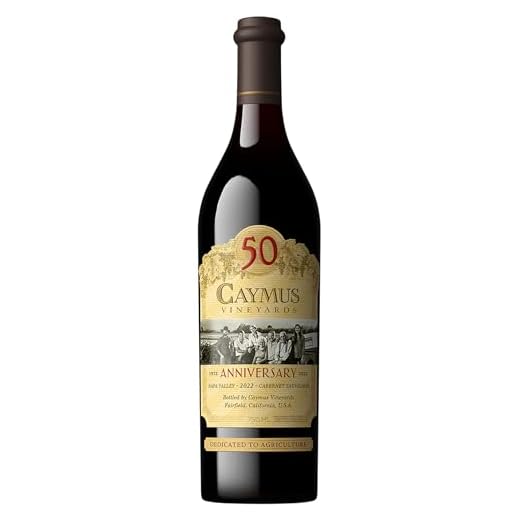



It’s common to notice changes in stool color after consuming beverages with intense pigmentation. If you indulge in a glass of dark fermented grape juice, there’s a chance you might observe a shift towards a darker hue in your bowel movements. This can happen due to the presence of certain pigments and compounds found in these drinks.
The phenolic compounds, particularly anthocyanins, contribute to the deep color of these beverages. These compounds can pass through the digestive system and affect the coloration of stool. Additionally, the tannins present in these drinks may also play a role in altering digestion and, consequently, the appearance of feces.
To mitigate any surprise, it’s advisable to monitor your intake and stay hydrated. If you notice persistent changes in color or any other unusual symptoms, consulting a healthcare professional is always a wise choice. Understanding how various foods and drinks impact your digestive health can lead to more informed choices and better overall well-being.
Impact of Dark-Hued Fermented Beverage on Digestive Output
Consuming this dark-hued fermented beverage can indeed alter the appearance of your digestive output. The pigments in these beverages, particularly anthocyanins, contribute to its deep color and can sometimes lead to a darker stool. This is typically harmless but can be concerning if unexpected.
Possible Causes for Color Change
Aside from the pigments, other factors may influence the color of your waste. High levels of iron or certain foods, like blueberries or black licorice, can also lead to similar changes. Therefore, it’s beneficial to consider your overall diet when observing shifts in appearance.
When to Seek Medical Advice
If you notice persistent changes in color that go beyond occasional occurrences, or if accompanied by other symptoms like discomfort or changes in consistency, consulting a healthcare professional is advisable. Regular monitoring of your digestive health is prudent, especially if you enjoy exploring various flavors and types of fermented beverages.
Understanding these nuances can enhance your experience and awareness of how different elements affect your body. Always prioritize your health while indulging in your passions.
Understanding the Impact of Red Wine on Digestion
Moderation is key when consuming fermented grape beverages, as they can influence gastrointestinal health. The polyphenols found in these drinks are known to enhance gut flora diversity, positively affecting digestion. This diversity can lead to improved nutrient absorption and a healthier digestive tract.
Some individuals may experience changes in bowel movements after consuming such beverages. This is often due to the presence of sulfites and tannins, which can irritate the digestive system in sensitive individuals. If discomfort occurs, consider reducing intake or opting for varieties with lower tannin content.
Stay hydrated. Alcohol can dehydrate the body, impacting digestion. Drinking water alongside these beverages can help mitigate this effect and support overall digestive health.
Pairing food with these beverages can also play a role in digestion. Foods rich in fiber, such as fruits and vegetables, can complement the effects of fermented beverages, aiding in smoother digestion and reducing the likelihood of gastrointestinal discomfort.
If you notice persistent changes in your digestive patterns, consulting a healthcare professional is advisable. Individual reactions vary, and understanding your body’s responses is crucial for maintaining digestive health.
Identifying the Components of Red Wine That Affect Stool Color
Phenolic compounds play a significant role in altering stool hue. These include tannins, anthocyanins, and flavonoids, which contribute to the deep color and complexity of the beverage. The interaction of these compounds with digestive enzymes can influence how pigments are absorbed and metabolized in the body.
Tannins
Tannins are polyphenolic compounds that can bind to proteins and other macromolecules. Their presence may lead to darker stool due to their ability to form complexes that are less easily digested. This can result in the retention of darker pigments in the gastrointestinal tract.
Anthocyanins
These pigments, responsible for the rich red and purple colors, are known for their antioxidant properties. Anthocyanins can be metabolized into various forms that might affect the coloration of waste. Their stability during digestion can vary based on individual gut flora and acidity levels, potentially leading to changes in stool appearance.
| Component | Effect on Stool Color |
|---|---|
| Tannins | May darken stool due to complex formation |
| Anthocyanins | Can alter color depending on metabolism |
| Flavonoids | Influence digestion and pigment absorption |
Understanding these components can help in comprehending how certain beverages interact with our digestive systems and the resulting effects on stool coloration. Individual responses may vary based on dietary habits and gut microbiome composition.
Examining the Role of Polyphenols in Red Wine
Polyphenols significantly influence various health aspects, including gut health and digestive processes. These compounds, abundant in certain fermented beverages, can interact with the gastrointestinal tract in unique ways.
Key Polyphenolic Compounds
- Resveratrol: Known for its antioxidant properties, resveratrol may promote healthy gut bacteria, potentially impacting digestion.
- Flavonoids: These compounds can enhance gut barrier function and modulate inflammation, which may affect stool characteristics.
- Tannins: Present in high concentrations, tannins can influence protein digestion and absorption, possibly altering the stool’s appearance.
Impact on Gut Microbiota
Research indicates that polyphenols can positively modify gut microbiota composition. A diverse microbiome is associated with improved digestive health. The interaction between polyphenols and gut bacteria may lead to the production of beneficial metabolites, which can further influence digestive outcomes.
For optimum benefits, consider moderate consumption, as excessive intake may lead to adverse effects. Incorporating a variety of polyphenol-rich foods alongside these beverages can enhance overall gut health.
Assessing How Diet Influences Stool Color Alongside Wine Consumption
Pay attention to the foods consumed alongside fermented grape beverages, as they significantly affect stool hue. Ingredients rich in iron, such as red meats and dark leafy greens, can lead to darker excretions. Likewise, beets and foods containing artificial coloring often result in similar outcomes.
Fiber-rich diets contribute to regular bowel movements and may alter stool consistency, impacting color perception. A diet high in fruits and vegetables typically yields lighter stool shades, while high-fat or processed foods might create darker results.
Hydration levels also play a pivotal role. Dehydration can lead to more concentrated waste, intensifying color. Conversely, adequate water intake can promote softer stool, reducing the likelihood of darkening.
Some spices and herbs, like turmeric and black pepper, can introduce unique pigments that affect stool appearance. Monitoring the combination of these dietary elements with fermented beverages can provide better insight into stool color changes.
In conclusion, consider the entire dietary pattern rather than focusing solely on one element. Analyzing the interplay between various foods consumed with fermented grape beverages offers a clearer understanding of how these choices influence stool hue.
Recognizing Other Factors That May Cause Black Stool
In assessing unusual stool color, it’s critical to consider various dietary and health-related influences. Certain foods, such as black licorice, blueberries, and iron supplements, can lead to darker bowel movements. Additionally, medications containing bismuth, like Pepto-Bismol, are known to alter stool hue, giving it a black appearance.
Gastrointestinal bleeding is another serious factor. Conditions like peptic ulcers or esophageal varices can result in dark, tarry stools, a sign that warrants immediate medical attention. Infections affecting the gastrointestinal tract, such as those caused by certain bacteria, may also change stool color due to altered digestion or inflammation.
Furthermore, specific health conditions, including liver disease, may contribute to stool discoloration. It’s advisable to monitor any accompanying symptoms like abdominal pain or changes in appetite. If there are concerns regarding stool color, consulting a healthcare professional is paramount.
For those interested in capturing these dietary experiences, consider investing in the best compact digital camera with rechargeable batteries to document your culinary journey effectively.
When to Seek Medical Attention for Changes in Stool Color
Consult a healthcare professional if stool appears dark or tarry, particularly if accompanied by additional symptoms such as abdominal pain, dizziness, or fatigue. These signs may indicate internal bleeding or other serious conditions.
Key Indicators for Medical Attention
- Persistent changes in stool color lasting more than a few days.
- Presence of blood or a coffee-ground appearance in feces.
- Significant weight loss or unexplained fatigue.
- Severe abdominal discomfort or cramping.
- Symptoms of anemia, including paleness and shortness of breath.
Understanding Potential Causes
Many factors can contribute to altered stool coloration, from dietary choices to underlying medical issues. If there is uncertainty regarding the cause, it is prudent to seek evaluation to rule out any serious conditions.
Tips for Moderating Intake and Monitoring Effects
Limit consumption to one or two servings per occasion to better manage potential digestive impacts. This approach helps in understanding individual reactions and minimizes drastic changes in stool color.
Stay hydrated by drinking ample water alongside any alcoholic beverages. Adequate hydration can aid in digestion and help maintain regular bowel movements.
Maintain a food diary to track what is consumed along with fermented beverages. Noting meals and their effects on digestion can provide insights into how different foods interact with alcohol.
Incorporate a variety of fiber-rich foods into meals. High-fiber diets can support digestive health and may balance any potential effects from fermented drinks.
Monitor overall health and any changes in bowel habits. If unusual symptoms arise, such as persistent changes in color or consistency, it’s wise to consult a healthcare professional.
Consider alternating between different types of beverages. This practice allows for a better understanding of how each affects digestion and stool appearance, helping to identify any problematic choices.
Be aware of other dietary components that can influence stool color, such as iron supplements or certain foods. Recognizing these factors can clarify changes that occur after consuming alcoholic beverages.
Engage in regular physical activity. Exercise can enhance digestive function and may mitigate some effects of alcohol on the gastrointestinal system.
Educate yourself on the specific components of various drinks. Understanding the role of ingredients can empower informed choices regarding consumption and its effects on health.







